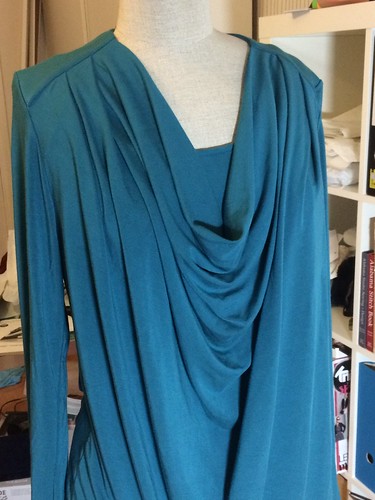I’ve been working on the sleeves for the dress. The original has short sleeves and I intended from the start to make 3/4 length sleeves. Whicht meant of course drafting those too. I am rather intrigued by the various ways you can draft sleeves. Because of that I took my time and drafted several versions of the sleeve, using 3 different drafting systems: the book Building Patterns by Suzy Furrer (same as in her classes on Craftsy), Patternmaking for fashion design by Helen Joseph-Armstrong and the one-piece sleeve from the Dutch Danckaerts system from the book dresses. It’s fascinating to see the different approaches and still coming to a more or less similar sleeve draft. That certainly is true for the methods used by Suzy Furrer and Helen Joseph-Armstrong. The cap of the sleeve drafted by those methods was very similar, the way to get there very different. The Danckaerts system gives a different shape for the back of the sleeve, which I know not to be good on me but I wanted to draft it anyhow to see how it would be compared to the others. In my next post I’ll show pictures of the different pattern pieces and describe the different approaches in more detail.
I made mock-up sleeves of the two versions. On the right is the SF draft and on the left the HJA draft.
The HJA draft felt more comfortable. Both had a few unwanted wrinkles.
This meant (and I had to check my fitting books for that) that the sleeve should be rotated a bit to the front and after I did that, it improved, but I wasn’t there yet. On the photo below I also made the sleeve cap higher (the height from the biceps line where the armhole starts to the top of the sleeve) by basting it with a very narrow seam allowance. This gave a pretty good result and I can move that arm properly. I’m pretty sure that if I had adapted the sleeve drafted with the SF method it would have resulted in a good fitting sleeve too.
Though I’m this far in drafting and constructing, I’m in doubt about the dress. When I first saw the picture of it a few years ago I really loved the design and thought it really would be a “me” dress. As it is I’m not so sure. Don’t know whether it’s the fabric or the design on me but I’m not as enthousiastic as I thought I would be. I might leave it alone for a week or so and see what I think.










































